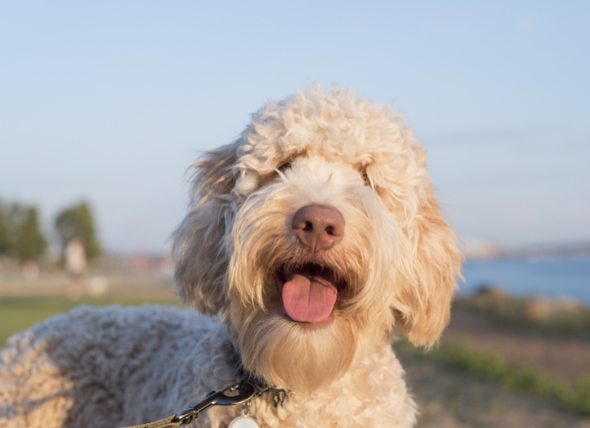A Closer Look at 'Doodle' Dog Breeds

By now, you’ve likely run into more than a few Doodle dogs. Labradoodles, Goldendoodles, Bernedoodles, Aussiedoodles—the list of quirky names for these designer dogs or hybrids goes on and on. But no matter how fancy the terminology is, it's still a mixed-breed dog.
What Is a Doodle Dog?
A Doodle is a cross between a Poodle and another dog breed. (There are also Oodles and Poos, such as Schnoodles, Yorkiepoos, and Cockapoos.) The original Doodle was a Labradoodle, bred in the early 1980s by Wally Conron while working as a puppy-breeding manager for the Royal Guide Dog Association of Australia. His goal was to create an allergy-free guide dog for a vision-impaired woman, whose husband was allergic to dog hair. Two years and 33 trials later, Conron successfully crossed a Standard Poodle with a Labrador, and the Labradoodle was born.
Over time, the Labradoodle became a popular breed and idea. But with popularity comes overbreeding. Unfortunately, the designer dog craze got a little out of hand. Soon enough, any breed mixed with a Poodle was being advertised as “hypoallergenic.” This was very appealing to puppy mills. Suddenly, there were Doodles everywhere.
These dogs also had a reputation for being low shedding, laid-back, good natured, smart, family dogs—the best of both breeds in the mix. The problem with genetics is that there’s no guarantee you’ll only get the good genes. As Conron said in an interview with The Sun, “For every perfect one, you're going to find a lot of crazy ones.”
Characteristics of Doodle Dogs
Doodle dogs became very attractive to buyers, with their reputation preceding them. But again, when you take the genes of two different breeds, you risk not only losing the desirable traits of each breed but also inheriting health issues and undesirable traits. Let's take the Labradoodle, for example. Labradors are predisposed to hip dysplasia and eye conditions, such as progressive retinal atrophy (PRA), cataracts, and retinal dysplasia. Poodles are predisposed to hip dysplasia, PRA, Von Willebrand's disease (a bleeding disorder), and Addison's disease. Roll the dice in the gene pool, and you can end up with any combination of these conditions, or none of them at all. That’s the chance you take with a mix of two breeds.
And, keep in mind, there is no such thing as a truly hypoallergenic dog. Allergens are carried in dander (dead skin cells), saliva, and urine, so they are impossible to fully avoid. Some dogs produce less allergens or shed less than others, but no dog is void of allergens. Allergy sensitivities vary from person to person, and dogs vary individually in their levels of allergens, so you never truly know if, or how badly, you will react to a certain dog.
Doodles vary in size, shape, color, and coat texture, all depending on their mix. But it is important to educate yourself before diving into Doodle land. Be sure to research the specific breeds, and how they are compatible with your desires.
Source: PetMD, 12/2017
4244 Madison Avenue, Trumbull, CT 06611
© 2016-2022 Wet Paws Dog Grooming, LLC. All rights reserved.
